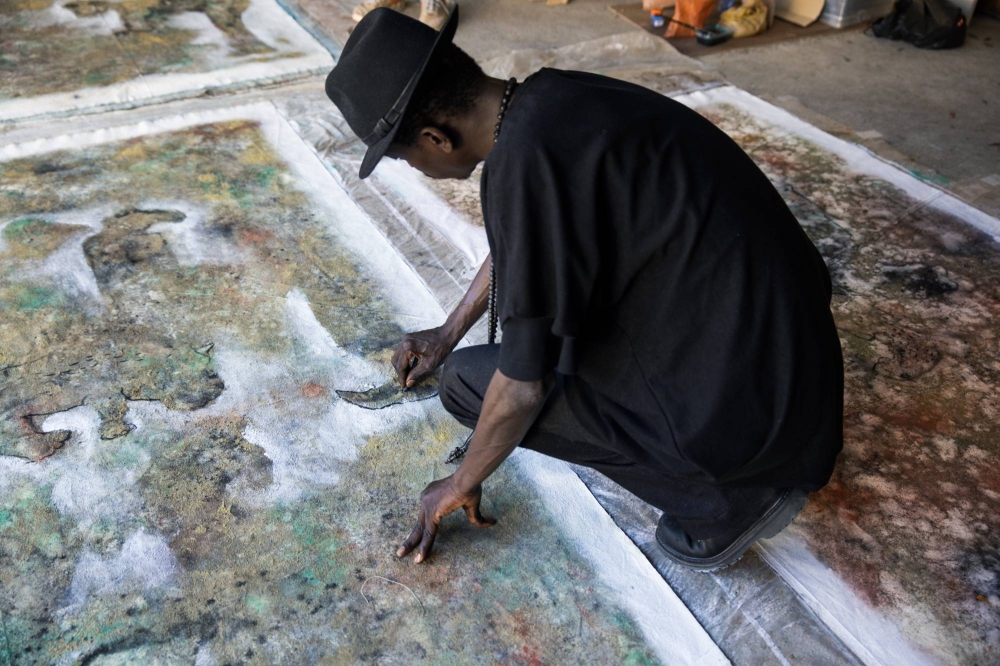Tokyo is seeing a remarkable confluence of Afro-Japanese artistic expression and thought, with three ongoing shows presenting unique dialogues between Japanese, African American and African aesthetics and culture — highlighting a significant expansion of Japan’s art world.
At the Mori Art Museum, Theaster Gates’ “Afro-Mingei” blends African American culture with Japanese folk-art traditions. At the newly opened Space Un — helmed by Edna Dumas, of the Hermes-affiliated Dumas family — the Dakar-based artist Aliou Diack’s exhibit “Anastomosis” delves into the interrelation of humans and nature, drawing parallels between Senegal and Japan. At Marubeni Gallery, “Wafrica: In Search of a Third Aesthetic” by Serge Mouangue, a Cameroon-born, Paris-based artist, juxtaposes African and Japanese elements, such as kimonos, masks and sculptures, to create a novel visual paradigm.
In “Afro-Mingei,” Chicago-based artist and academic Gates introduces his titular concept, which is deeply influenced by both his studies of Japanese ceramics since 2004 in Tokoname, Aichi Prefecture, and his African American heritage. The solo exhibition — billed as the largest ever by a Black artist in Japan — ambitiously fuses Japan’s mingei (literally “art of the people”) tradition with the “Black is Beautiful” movement from the United States’ civil rights era to find overlaps in aesthetics, politics and spiritual approaches.

